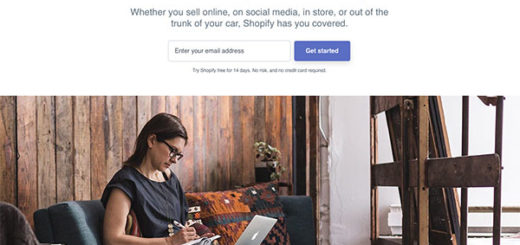10 Ways to Boost Shopify Store Sales with Wishlists
Adding wishlist functions to your online store can help turn more window-shoppers into paying customers, if you make your wishlist visible and easy to use and maybe don’t call it a wishlist.
Here’s how to choose your wishlist tools, put them in the right places on your site, and make the most of the marketing opportunities wishlists deliver.
10 Steps to Wishlists That Work
Why do wishlists work for online stores?
Saving items for later reduces cart abandonment, and it makes it easy for your shoppers to pick up where they left off later, even on another device. Shareable wishlists can also reach new customers who are shopping for gifts or want to copy a social media influencer’s style.
Follow these steps to boost sales for your online store with wishlists.
1. Choose your Shopify wishlist app
There are many Shopify wishlist apps on Shopify App Store.You can refer the article “The best Shopify Wishlist Apps” to choose Shopify wishlist app for your store.
2. Decide what to call your wishlists
Wishlist as in, “add to wishlist” may seem like the obvious term to use in your store.
But UX-research group Nielsen Norman Group has found that some shoppers feel “greedy” about adding things to a list to share with others. NNG recommends alternatives like Favorites or My List.
3. Choose where to put wishlist tools on your site
There should be an add to wishlist (or favorites or my list) button on every product page. Google’s Retail UX Playbook lists wishlist-related calls to action on product pages to reduce friction for shoppers who are browsing or who want to complete their purchase later, on another device.
You can also add a wishlist button usually a heart to product photos on your category pages. West Elm does this, and lets shoppers start marking favorites without signing in or creating an account first.

Shoppers can review their My Favorites Gallery and sign in if they want to save those items for later.

It’s also a good idea to make wishlists visible and easy to access from the shopping cart and during checkout, to encourage shoppers to add items from their lists.
4. Customize your store’s wishlist tools
You should be able to customize your wishlist buttons, colors, messages, and more to blend in with your site design. You may also have the option to require that shoppers register in order to make a wishlist, although NNG recommends against that because it adds friction to the shopping experience.
You may also be able to customize the sharing options you want your store’s wishlists to support. Make it as easy as possible for shoppers to share their lists, especially on social media. One study found that online stores without “clear social sharing options” consistently miss out on potential sales.
5. Preview and test your store’s wishlist features
Navigate through your store the way shoppers do and add things to test wishlists to make sure that everything looks and works the way you want it to. Preview the new setup on different devices and pay special attention to how your customizations look on mobile phones.
6. Activate your new wishlist capabilities
Make your wishlist functions live, let your shoppers know they can make wishlists, and then listen for their feedback. You may need to tweak things as customers start building and sharing their lists.
Wishlist implementation done, right? You’re just getting started.
You’ll get much more value from your store’s wishlists if you go beyond relying on customers to keep and share their lists. The next steps are all about making the most of the marketing opportunities wishlists give you.
7. Use wishlist data in your marketing campaigns
Use your wishlist admin dashboard to make your marketing more effective. You’ll see how often list owners post. You can see which products are on the most wishlists and promote them. You can personalize email offers to customers based on specific items on their lists. And you can create holiday promotions that offer deals on users’ wishlist items and incentives for sharing lists.
You can also send personalized offers of similar items at different price points, along with cross-sell offers.
For example, if a customer has a pair of jeans on her list, you can offer cheaper and more expensive jeans from the same brand. You can also offer tops, belts, and shoes that would look good with her wishlist jeans.
8. Test your wishlist-based marketing efforts
We’ve talked before on the blog about A/B testing for email marketing, and your wishlist marketing messages should get A/B tested, too. Sometimes the color or placement of a button or a small change to the wording of a subject line can make a significant difference in engagement and conversions.
So, test early and often.
9. Monitor your wishlist metrics
Over time, you’ll send trends emerge from you wishlist data. How many of your shoppers have wishlists? Is the number of lists rising or flat? Are your customers consistently sharing their lists, or do you need to promote sharing more heavily?
Pay special attention to how users are sharing their lists. Is email or social their preferred channel? If it’s social, which platforms do they use the most, and which platforms generate the most traffic to your store from shared lists? This data will help you decide where to focus your marketing efforts.
It can also flag areas where you may need to improve UX. For example, if you’re getting a lot of click-throughs from lists shared on Instagram but very few conversions, you need to examine that pathway to see if there are obstacles you can remove to increase sales.
10. Keep optimizing your wishlist program
Consumer preferences, technology, and social network popularity are always evolving. That means you need to keep tabs on what’s trending in online retail, in addition to watching your marketing metrics and A/B test results. Keep listening to your customers, too. Any opinions or requests they share about your wishlists when they contact customer service or post on social media are data you can use to build a better wishlist program.
Source: Hostgator’s Blog








